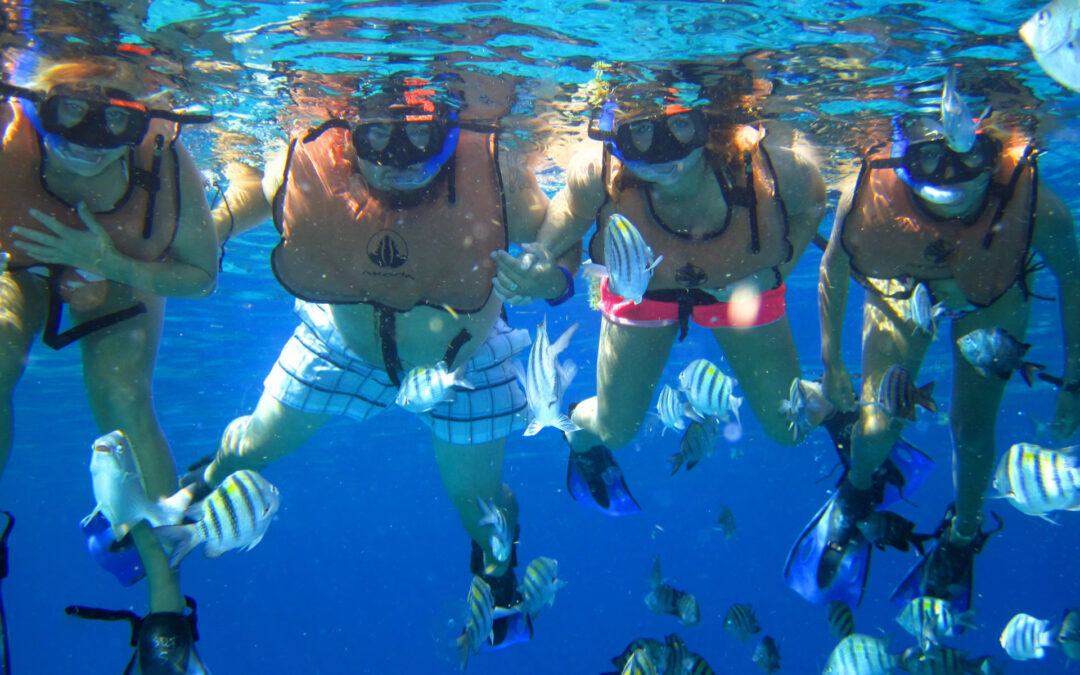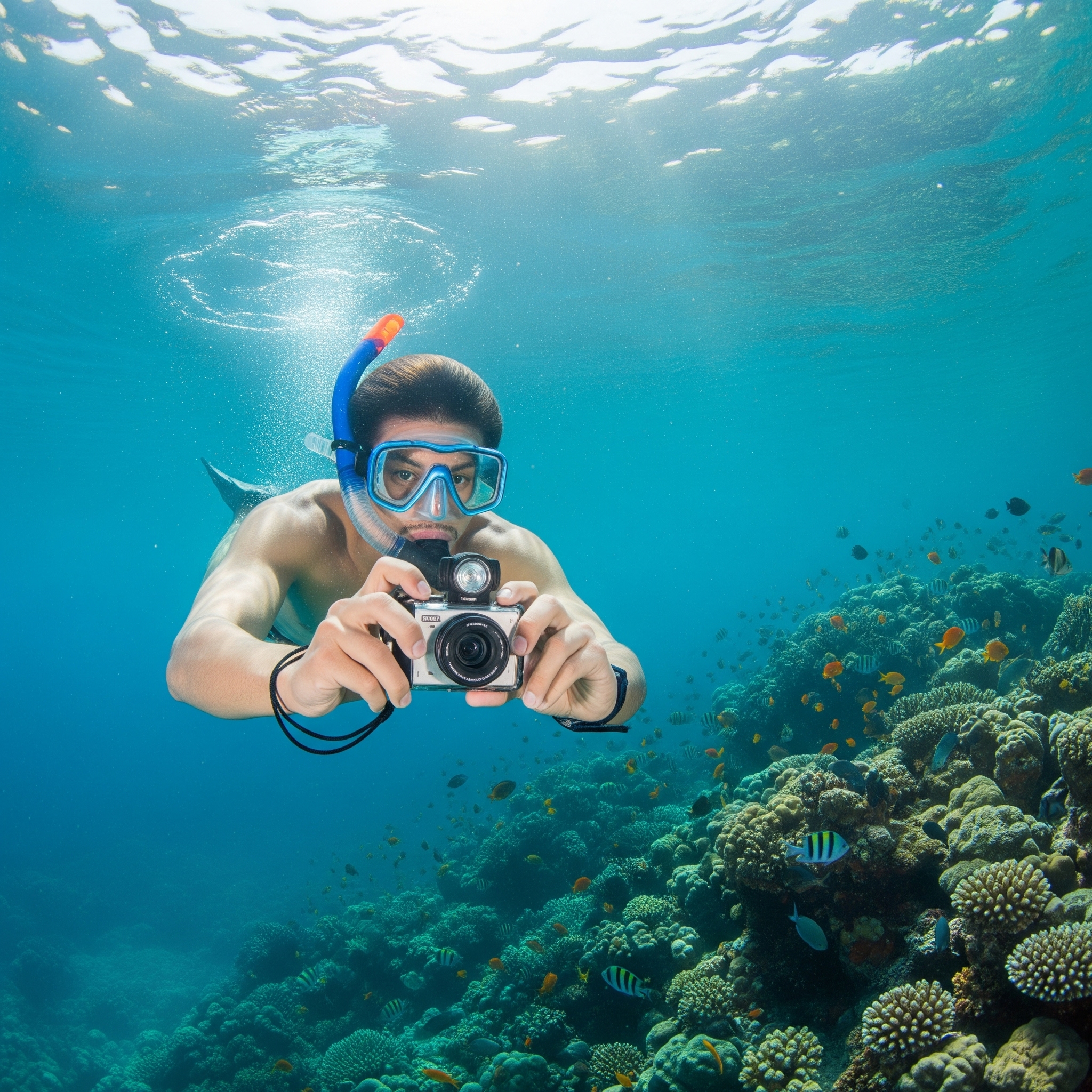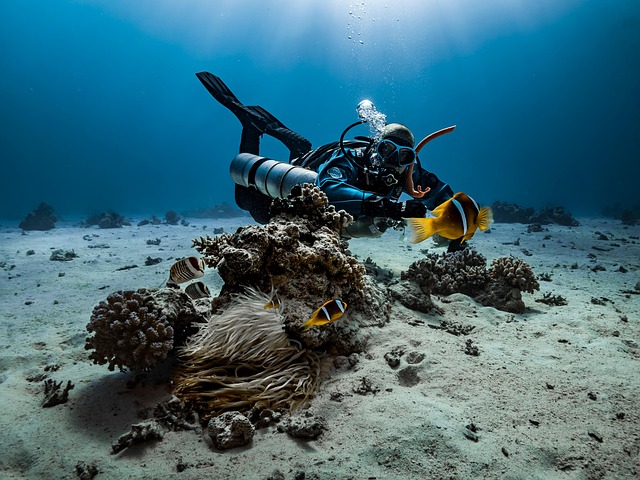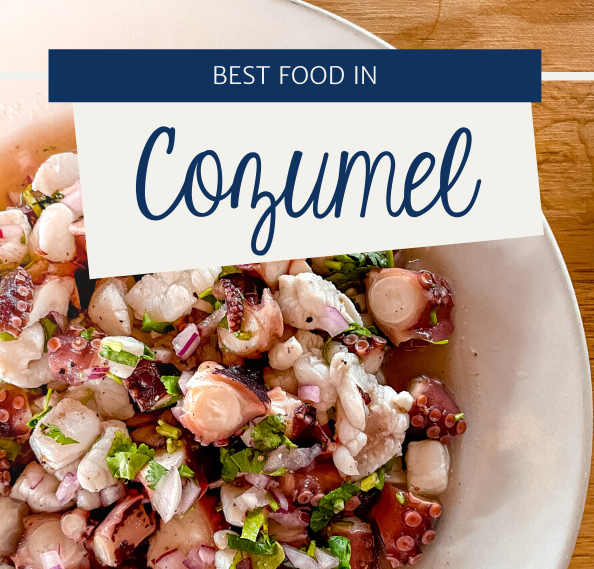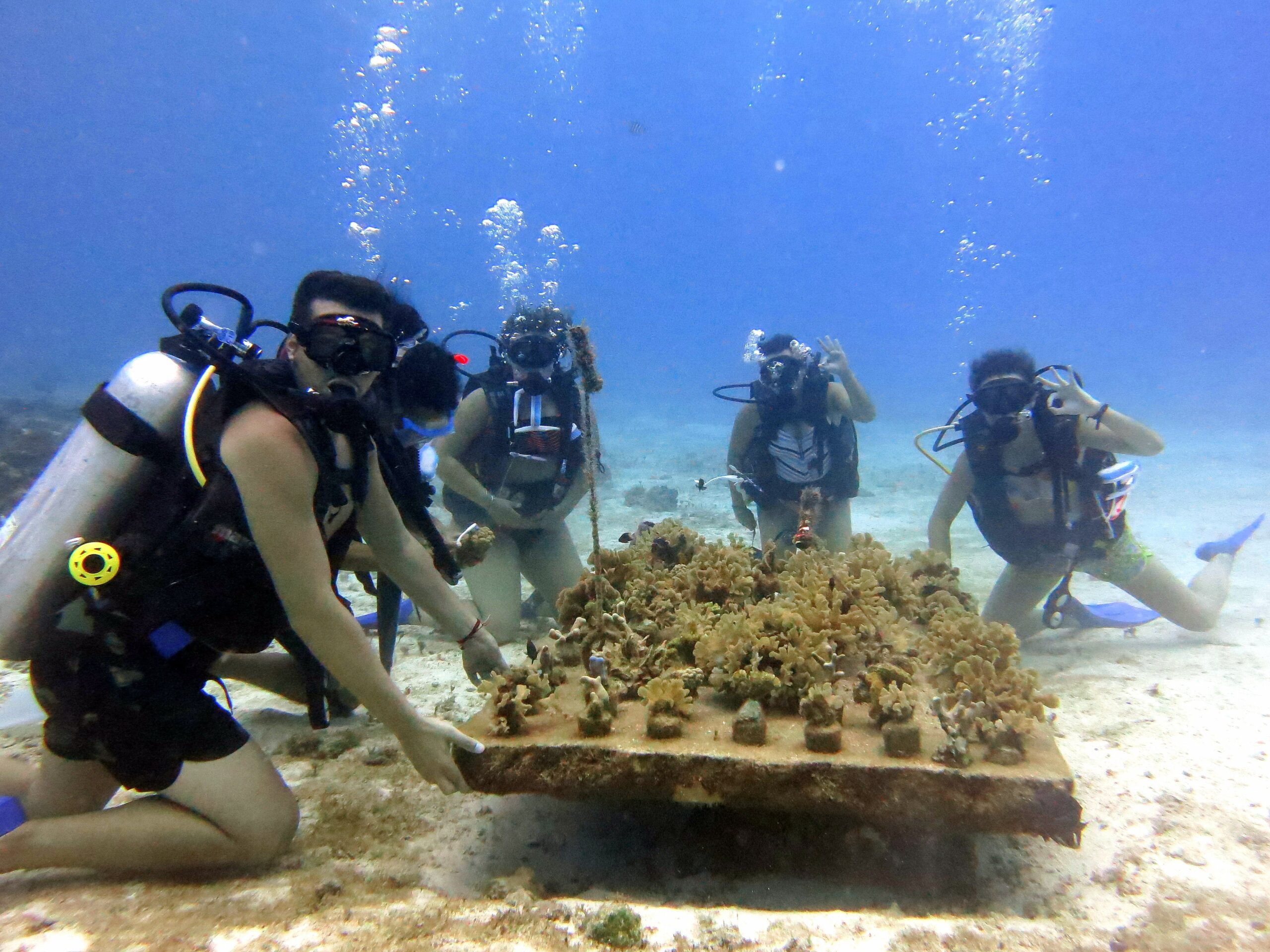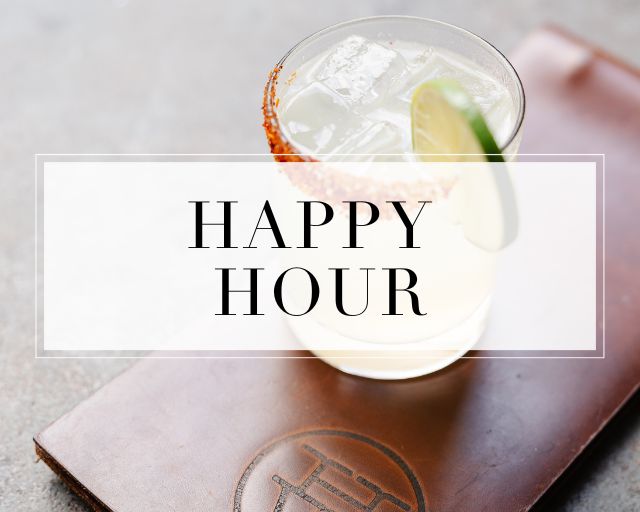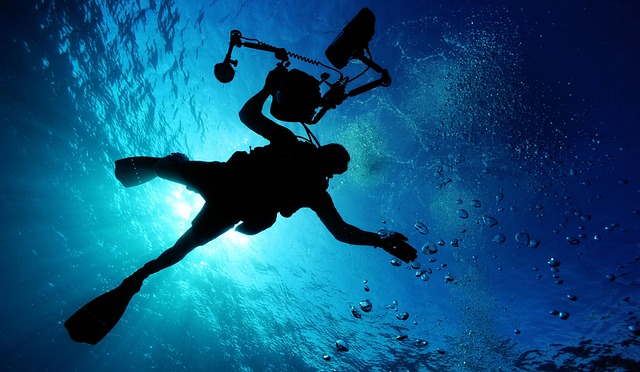“What’s easier on your ears — scuba or snorkel?”,
“Is scuba diving worth it if you don’t swim well?”
Debating between snorkeling or scuba diving in Cozumel?
Learn the key differences, pros and cons, and which experience is better for beginners and underwater explorers.
Trying to Decide Between Snorkeling and Scuba Diving?
Planning a visit to Cozumel and not sure if you should go snorkeling or scuba diving? You’re not alone. Both offer unforgettable underwater experiences — but each suits different comfort levels, timeframes, and adventure goals.
In this guide, we’ll break down the differences, benefits, and ideal scenarios for each so you can decide which one is right for your next adventure.
What’s the Difference Between Snorkeling and Scuba Diving?
| Feature | Snorkeling | Scuba Diving |
| Breathing Equipment | Snorkel tube (surface breathing) | Air tank + regulator (underwater breathing) |
| Depth | Surface or shallow (1–5 meters) | Deeper (up to 12–18 meters for beginners) |
| Training Needed | None (basic instruction) | Yes (Discover Scuba or certification) |
| Time Commitment | 30–60 minutes | 2+ hours for beginner dive |
| Cost | More affordable | Higher (equipment, instructor, boat) |
When Snorkeling is the Better Choice
Snorkeling is perfect for beginners, families, and travelers who:
- ✅ Prefer a low-stress, surface-level experience
- ✅ Don’t want to commit to lessons or certifications
- ✅ Are visiting for a short time (e.g., cruise passengers)
- ✅ Want to explore reefs quickly and casually
At Sunset Cozumel, our shore snorkeling tours are guided and beginner-friendly, with calm waters and shallow reef beds teeming with tropical fish.
When Scuba Diving is the Right Pick
Scuba diving is ideal if you:
- ✅ Want to explore deeper reef walls, caves, or wrecks
- ✅ Are curious about becoming a certified diver
- ✅ Want to spend more time under the surface
- ✅ Are comfortable learning breathing techniques and gear handling
Sunset Cozumel offers Discover Scuba Diving programs — no certification required. You’ll learn the basics, practice in shallow water, and dive to up to 12 meters with an experienced instructor.
Is Snorkeling or Scuba Diving Better for Kids and Seniors?
Snorkeling: Safe, Easy & Perfect for All Ages
Snorkeling in Cozumel is an ideal activity for both young children and older adults. It’s simple to learn, doesn’t require certification, and takes place in calm, shallow waters—making it one of the most accessible ways to explore marine life.
Why it’s great for kids and seniors:
- ✅ No need to carry heavy equipment
- ✅ Floatation vests available for safety
- ✅ Easy shore entry — no boat required
- ✅ Shorter sessions (30–45 minutes)
- ✅ Supervised by experienced guides
Minimum Age: 4–5 years (with adult supervision)
Maximum Age: None — many of our snorkelers are in their 70s and beyond!
Scuba Diving: Safe for Seniors and Teens with Guidance
Scuba diving can be a wonderful experience for older adults, provided there are no major health limitations. At Sunset Cozumel, we regularly guide guests in their 60s and 70s through beginner-friendly Discover Scuba Diving experiences, with personalized instruction and small group ratios.
🧠 Did you know? According to PADI, many certified divers begin in their 50s or later — it’s never too late to start!
Who scuba diving is best suited for:
- ✅ Seniors in good cardiovascular health
- ✅ Teens and adults age 10+ who are curious about underwater exploration
- ✅ Guests willing to undergo a brief medical questionnaire and safety orientation
Minimum Age: 10 years (PADI Discover Scuba)
Health Note: Seniors with conditions like asthma, heart disease, or diabetes should consult a doctor first.
🤔 Is Scuba Diving Safe for Seniors?
Yes — with proper health screening and professional guidance, scuba diving is safe for most seniors. Our instructors are trained to work with older adults and adapt the pace of the session. The key is choosing a calm dive site, using high-quality equipment, and having experienced instructors on hand — all of which we provide.
Tips for senior divers:
- ✅ Stay hydrated and well-rested before your dive
- ✅ Always disclose medications or past medical conditions
- ✅ Choose beginner-friendly dive depths (12 meters max)
- ✅ Avoid diving immediately after flying or intense activity
Family-Friendly Fun at Sunset Cozumel
Whether you’re planning a multigenerational family vacation or are a solo traveler over 60, both snorkeling and scuba diving at Sunset Cozumel can be tailored to your comfort and skill level. Our shallow reefs, experienced dive pros, and convenient cruise port location make underwater fun accessible to everyone.
👇 Contact us to ask about our family packages or senior-friendly snorkeling and diving sessions.
- Check Out – Best Scuba Diving in Cozumel
- Check Out – Best Snorkelling Spots in Cozumel
How Your Body Reacts Differently: Snorkeling vs. Scuba Diving
Pressure, Buoyancy & Breathing – What Changes Underwater?
While both snorkeling and scuba diving let you experience Cozumel’s marine beauty, your body goes through very different physiological effects depending on the activity. Understanding how your body reacts can help you choose the experience that’s safest and most comfortable for you.
🧠 Breathing Differences
Snorkeling:
- Breathing remains normal through a snorkel tube at the surface.
- Air is at atmospheric pressure, meaning your lungs experience no significant change.
- There’s no need for special training to manage breathing patterns.
Scuba Diving:
- You breathe compressed air from a tank using a regulator.
- Breathing is deeper and slower to conserve air and manage buoyancy.
- Divers must stay calm and controlled to avoid overexertion or panic.
Pressure on the Body
Snorkeling:
- You stay at or near the surface, so pressure on your body doesn’t change.
- Equalizing your ears is rarely necessary unless you dive a few feet below.
Scuba Diving:
- Water pressure increases with depth: roughly 1 atmosphere (atm) every 10 meters.
- Divers must equalize pressure in their ears using the Valsalva maneuver to avoid pain or injury.
- Failing to equalize properly can lead to barotrauma — pressure-related injury to the ears or sinuses.
Buoyancy Control
Snorkeling:
- Natural buoyancy and floatation vests help you stay at the surface effortlessly.
- Snorkelers don’t require buoyancy adjustment skills or gear.
Scuba Diving:
- Divers use a Buoyancy Control Device (BCD) to manage their position underwater.
- Mastering buoyancy is critical — too much air in the BCD causes ascent, too little leads to sinking.
- Neutral buoyancy helps prevent contact with coral and conserves energy.
Nitrogen Absorption (Unique to Scuba Diving)
Scuba divers absorb nitrogen from compressed air at higher pressures. At recreational depths, this is harmless, but it requires:
- Controlled ascent rates to avoid nitrogen bubbles forming in the bloodstream (decompression sickness).
- No-fly time after diving (usually 18–24 hours) to let nitrogen leave the body safely.
Snorkelers do not experience nitrogen absorption and don’t need to worry about decompression.
Which Is Easier on the Body?
| Factor | Snorkeling | Scuba Diving |
| Breathing Effort | Low | Moderate (deep, controlled) |
| Pressure Changes | Minimal | High — requires equalization |
| Nitrogen Involvement | None | Yes — managed through dive planning |
| Gear Weight | Light | Heavy (esp. out of water) |
If you’re concerned about pressure, breathing adaptation, or medical limitations, snorkeling is the safer, more relaxed option. But for those excited by the depth and are physically cleared for diving, scuba opens up a breathtaking new world under the surface.
Still Not Sure? Try Both!
If you’re on the fence, why not try both? Start with a morning snorkeling session to build comfort, then book a beginner scuba dive in the afternoon. Our guests love doing both in one day.
Safety Tips for First-Time Snorkelers and Divers
- 🤿 Always use reef-safe sunscreen
- 🦺 Wear a flotation vest if you’re new to snorkeling
- 👨🏫 Choose certified instructors for scuba tours
- 🌊 Avoid snorkeling or diving in strong currents or rough weather
- 🚫 Don’t touch coral or marine life
Gear Comparison: Snorkeling vs. Scuba Diving Equipment
Snorkeling gear is perfect for travelers who want a quick, easy look beneath the surface. Scuba diving gear requires more training and planning — but gives you the freedom to explore Cozumel’s world-class reefs at depth.
While both activities let you explore Cozumel’s incredible marine life, the gear required for snorkeling vs. scuba diving differs dramatically in complexity, cost, and preparation.
Here’s a breakdown of what each activity typically involves.
Snorkeling Gear: Simple, Lightweight, Easy to Use
Standard Snorkeling Set Includes:
| Gear Item | Purpose | Optional Add-ons |
| Snorkel Mask | Provides clear underwater vision | Mask defogger to prevent fogging |
| Snorkel Tube | Allows surface breathing | Dry-top snorkels for wave protection |
| Fins | Help with propulsion and reduce fatigue | Adjustable fins for better fit |
| Swim Vest / Float | Adds buoyancy and safety | Great for kids and seniors |
💡 Mask defogger, anti-leak seals, and soft silicone mouthpieces are small upgrades that improve comfort for long sessions.
Wetsuit? Optional. Most snorkelers in Cozumel use a rash guard or shorty wetsuit if snorkeling in cooler months (December–February).
Scuba Diving Gear: Technical, Heavier, But Offers More Freedom
Standard Scuba Set Includes:
| Gear Item | Purpose | Notes / Specs |
| Mask & Snorkel | For surface swimming and pre-dive use | Same as snorkeling gear |
| Regulator | Allows breathing from tank underwater | Must be checked for proper airflow |
| BCD (Buoyancy Control Device) | Maintains buoyancy underwater and on surface | Inflated/deflated during the dive |
| Air Tank | Supplies compressed breathing gas (usually air) | Standard size ~80 cu ft @ ~3000 PSI |
| Fins | Help with propulsion in open water | Usually stiffer than snorkeling fins |
| Dive Computer / Gauge | Monitors depth, time, and no-deco limits | Critical for safety and planning |
| Wetsuit | Protects against cold and coral | Common thickness: 3mm shorty or full |
| Weights | Counteract wetsuit buoyancy | Integrated or belt-based |
Snorkeling vs. Scuba Diving Gear Checklist
| Feature | Snorkeling | Scuba Diving |
| Complexity | Low | High |
| Weight (out of water) | Very light | Heavy (esp. tank and BCD) |
| Comfort Gear | Rash guard, float vest | Wetsuit, weight belt, dive boots |
| Cost | $–$$ | $$$$ (rental or ownership) |
| Maintenance Required | Minimal | Regular servicing (regulator, tank, BCD) |
Snorkeling vs. Scuba Diving – Choose Based on Comfort and Curiosity
Both snorkeling and scuba diving in Cozumel offer access to world-class reefs and marine life. Snorkeling is best for quick, easy exploration. Scuba diving opens the door to deeper discovery. Either way, you’ll never forget your first underwater experience.
👉 Contact us to book a snorkeling or beginner dive tour, or ask about combining both into one unforgettable day!
Snorkeling vs. Scuba Diving FAQs
Q: Is snorkeling or scuba diving easier?
A: Snorkeling is easier and requires no training. It’s ideal for beginners who want to stay on the surface. Scuba diving requires instruction but allows you to explore deeper.
Q: Can you snorkel and scuba dive on the same day in Cozumel?
A: Yes, many guests start with snorkeling and then try a Discover Scuba Dive later the same day. At Sunset Cozumel, we offer both tours with safe timing in between.
Q: Is scuba diving safe for beginners?
A: Absolutely. With proper guidance from certified instructors and safety protocols, scuba diving is very safe — even for first-timers.
Q: What’s more affordable — snorkeling or diving?
A: Snorkeling is more affordable and requires less gear. Scuba diving is higher in cost due to the equipment and instructor time but offers a deeper experience.
Q: What marine life can you see in Cozumel?
A: Both snorkelers and divers can see tropical fish, sea turtles, coral, stingrays, and sometimes eels or nurse sharks, depending on location and depth.

